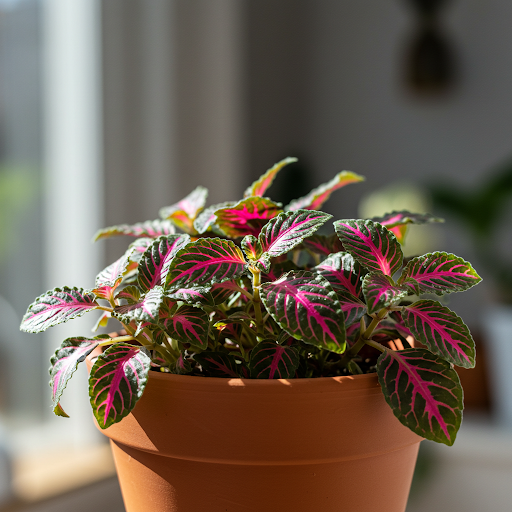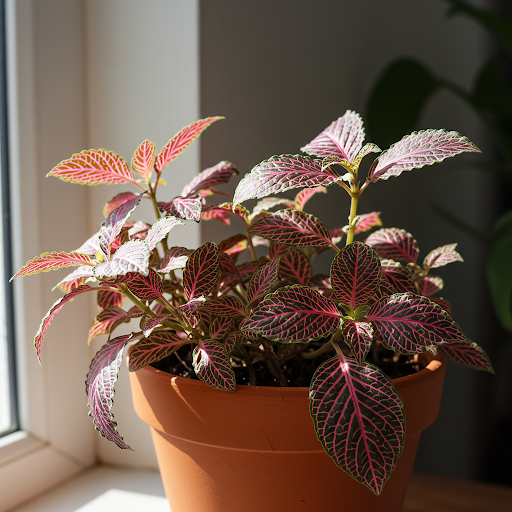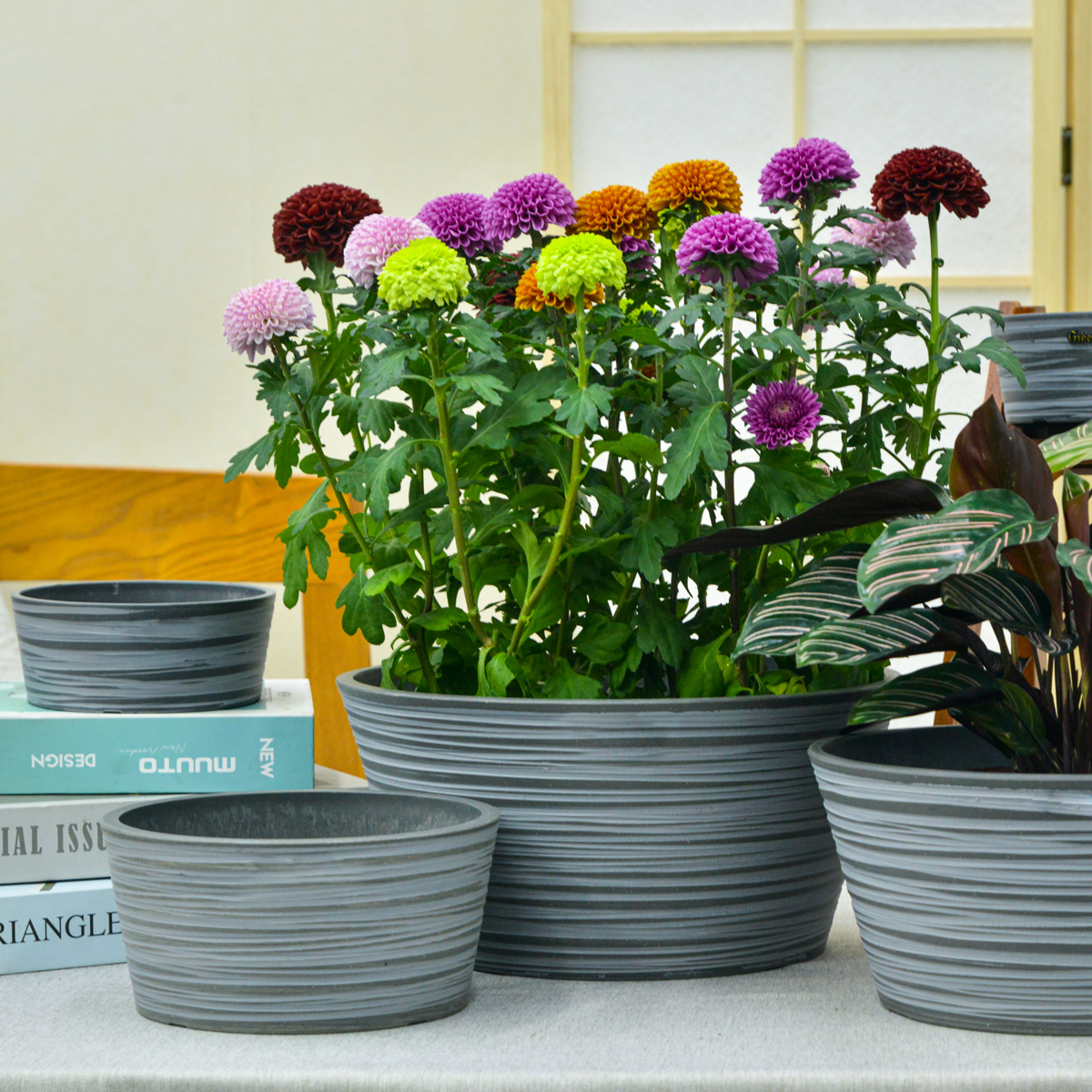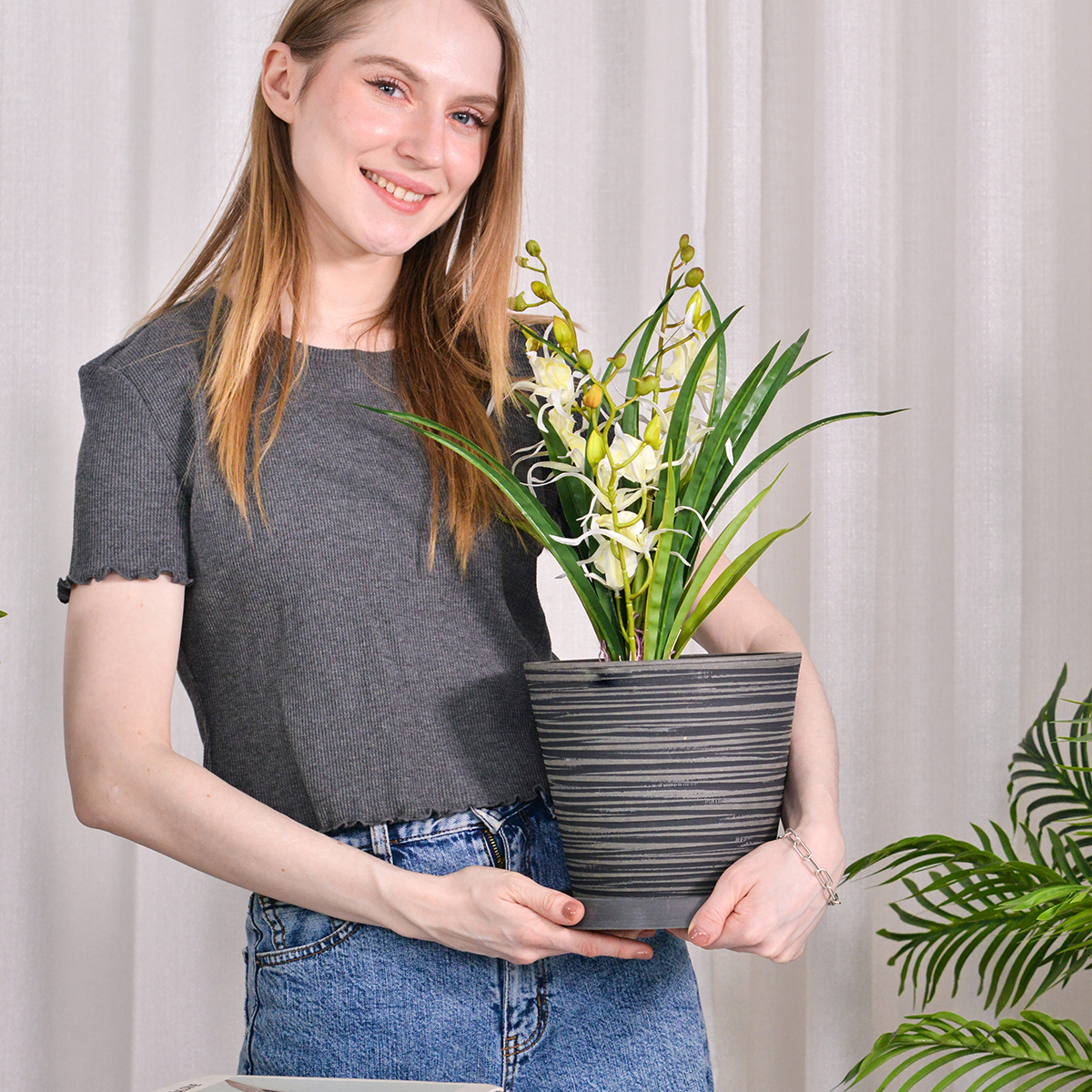Nerve Plant Indoors: The Ultimate Guide to Growing Fittonia at Home
Looking to add a touch of vibrant patterns and lush greenery to your indoor plant collection? Nerve Plants, scientifically known as Fittonia verschaffeltii, are captivating houseplants prized for their intricately veined leaves that resemble delicate networks of nerves. These charming and relatively low-maintenance plants, belonging to the Acanthaceae family and native to South America, are perfect for adding pops of color and texture to your indoor spaces. This comprehensive guide will provide you with everything you need to know to grow Nerve Plants indoors, from selecting the right varieties and pots to mastering essential care techniques for thriving Fittonia in your home.

Nerve Plants,
What are Nerve Plants (Fittonia)?
Nerve Plants, also known as Mosaic Plants or Fittonia, are celebrated for their striking foliage. Their leaves are adorned with prominent veins in contrasting colors, typically white, pink, red, or green, creating a beautiful “nerve-like” pattern against the base leaf color. Fittonia verschaffeltii is the most common species grown as a houseplant, along with its cultivar Fittonia verschaffeltii var. argyroneura. They are native to tropical rainforests, particularly in South America, thriving in warm, humid, and shaded environments.
Can Nerve Plants Thrive Indoors?
Yes, Nerve Plants thrive exceptionally well indoors and are popular choices for terrariums, dish gardens, and general houseplants. Their preference for warmth, humidity, and indirect light aligns perfectly with typical indoor conditions. With proper care, Nerve Plants can bring vibrant color and intricate patterns to your home year-round.
Ideal Indoor Growing Conditions for Nerve Plants (Fittonia):
- Nerve Plant Varieties for Indoors: Fittonia verschaffeltii and its variety argyroneura are the most common types grown indoors. Within these, numerous cultivars offer diverse vein colors and leaf patterns. Popular indoor Nerve Plant varieties include:
- Fittonia verschaffeltii var. argyroneura ‘White Tiger’: Dark green leaves with bright white veins.
- Fittonia verschaffeltii var. argyroneura ‘Pink Angel’: Green leaves with vibrant pink veins.
- Fittonia verschaffeltii var. argyroneura ‘Red Vein’: Green leaves with striking red veins.
- Fittonia verschaffeltii ‘Skeleton’: Heavily veined leaves where the veins are more prominent than the green leaf surface.
- Miniature or Compact Fittonia: Smaller cultivars are ideal for terrariums and smaller pots.
- Light: Nerve Plants prefer bright, indirect light. They thrive in locations that receive filtered sunlight or bright shade. East or north-facing windows are often ideal. Avoid direct, intense sunlight, especially afternoon sun, which can scorch their delicate leaves. Too much direct sun can also cause colors to fade. Insufficient light will lead to leggy growth and dull colors. Nerve plants can also be successfully grown under artificial grow lights.
- Soil: Nerve Plants need moist, well-draining soil that is rich in organic matter. Use a high-quality potting mixformulated for indoor plants, African violets, or a general-purpose potting mix amended with peat moss, perlite, and vermiculite to improve drainage, aeration, and moisture retention.
- Watering: Nerve Plants prefer consistently moist soil and are very sensitive to drying out. Water regularly to keep the soil evenly moist, but not soggy. Water when the top of the soil just begins to feel slightly dry. Water thoroughly until water drains out of the drainage holes. Never let the soil dry out completely, as this can cause wilting and leaf drop. They are known to be quite dramatic when they need water and will visibly droop, but they usually recover quickly after watering. Reduce watering slightly in winter when growth slows down. Use room temperature water.
- Humidity: Nerve Plants thrive in high humidity, mimicking their rainforest origins. Aim for humidity levels of 60-80% or higher. This is crucial for their health and vibrant foliage. Increase humidity by:
- Terrariums: Nerve Plants are ideal for terrariums and enclosed containers, which naturally trap humidity.
- Pebble Trays: Place pots on trays filled with pebbles and water (water level below the pot base).
- Humidifier: Use a room humidifier, especially during dry seasons or winter heating.
- Grouping Plants: Grouping Nerve Plants with other humidity-loving plants can create a more humid microclimate.
- Misting: Mist the leaves frequently with room temperature water, especially in the mornings.
- Bathroom (if suitable light): A well-lit bathroom can be an ideal location due to naturally higher humidity.
- Temperature: Average room temperatures between 65°F to 80°F (18°C to 27°C) are ideal. Nerve Plants are comfortable in typical household temperatures. Avoid exposing them to temperatures below 60°F (15°C) or sudden temperature fluctuations and cold drafts. They prefer warmth and consistent temperatures.
Planting Your Nerve Plant Indoors:
- Starting from Potted Plants or Cuttings: The easiest way to start growing Nerve Plants indoors is to purchase potted plants from nurseries, garden centers, or online retailers. They are also very easily propagated from stem cuttings.
- Propagation from Stem Cuttings: Nerve Plants root readily from stem cuttings. Take stem cuttings a few inches long, ensuring they have a few leaves and nodes. Remove lower leaves that would be buried in soil. You can root cuttings in water or directly in moist potting mix. Keep cuttings warm and humid. Roots typically develop within a few weeks.
- Planting Time: Nerve Plants can be planted or repotted at any time of year indoors. Spring or early summer, at the start of the growing season, is generally recommended for optimal establishment and growth.
Choosing the Right Pots for Indoor Nerve Plants:
- Suitable Pot Types: Select pots with good drainage and moisture retention. Plastic, ceramic, or glazed terracotta pots are all suitable. Plastic pots are often preferred as they help retain moisture, which Nerve Plants appreciate. Terracotta can be used, but may require slightly more frequent watering due to its porous nature.
- Drainage: Good drainage is important to prevent soggy soil, although Nerve Plants prefer consistently moist conditions. Ensure your chosen pot has drainage holes at the bottom. You can also add a thin layer of gravel or pot shards at the base of the pot to improve drainage slightly.
- Pot Size: Choose a pot that is appropriately sized for the current size of the plant and allows for some growth. Nerve Plants have relatively shallow root systems. Select pots that are wider than they are deep. For smaller plants, start with pots that are 4-6 inches in diameter. Mature Nerve Plants may need pots 6-8 inches or slightly larger in diameter. Avoid overpotting.
- Potting Mix: Use a moist, well-draining potting mix as described earlier.
Essential Care Tips for Vibrant Indoor Nerve Plants (Fittonia):
- Watering Schedule: “Keep Soil Moist, Never Dry”. Water regularly to maintain consistently moist soil. Check soil moisture frequently and water when the top of the soil just begins to feel slightly dry. Never allow the soil to dry out completely.
- Humidity is Non-Negotiable: Maintain high humidity levels. This is critical for preventing leaf crisping and maintaining vibrant foliage. Terrariums, pebble trays, humidifiers, and frequent misting are essential tools for indoor Nerve Plant care.
- Light Management for Color and Health: Provide bright, indirect light. Monitor leaf color and growth. If colors are dull or growth is weak, increase light exposure (but avoid direct sun). If leaves show signs of scorch, reduce light intensity.
- Fertilizing for Lush Foliage: Nerve Plants benefit from regular fertilization during the growing season (spring and summer) to support their lush foliage growth. Fertilize every 2-4 weeks with a balanced liquid fertilizer diluted to half strength, or a fertilizer specifically formulated for foliage plants. Follow package instructions. Reduce or stop fertilizing during the fall and winter dormant period.
- Pruning for Bushiness: Pinch back the tips of stems regularly to encourage bushier growth and prevent legginess. Pruning can be done at any time of year to maintain shape and size.
- Terrarium Growing: Nerve Plants are exceptionally well-suited for terrariums due to their love of high humidity and tolerance of lower light conditions. They make excellent terrarium filler plants.
- Repotting Schedule: Repot Nerve Plants every 1-2 years, or when they become root-bound or the potting mix is depleted. Repot in spring or early summer.
- Pest and Disease Control: Monitor Nerve Plants for pests like mealybugs, aphids, and spider mites. High humidity can also make them susceptible to fungal diseases like root rot and stem rot if drainage or air circulation is poor. Ensure good drainage, avoid overwatering, and provide some air circulation. Treat any pest infestations or diseases promptly with insecticidal soap, neem oil, or appropriate fungicides if needed, following product instructions carefully and prioritizing organic options when possible.
Popular Nerve Plant Cultivars and Color Variations:
- White Veins: ‘White Tiger’, ‘White Anne’, ‘Snow Queen’, ‘White Star’.
- Pink Veins: ‘Pink Angel’, ‘Pink Forest Flame’, ‘Pink Vein’.
- Red Veins: ‘Red Vein’, ‘Ruby Red’, ‘Red Star’.
- Green Veins (less common): Some cultivars have lighter green or yellowish veins.
- Miniature Fittonia: Smaller cultivars like ‘Mini White’, ‘Mini Red’, are ideal for small terrariums.

Nerve Plants,
In Summary:
Growing Nerve Plants indoors is a delightful way to add intricate patterns and vibrant color to your home. Their relatively easy care, coupled with their stunning foliage, makes them rewarding houseplants for any plant enthusiast. By providing bright, indirect light, consistently moist soil, high humidity (crucially!), and regular care, you can successfully cultivate thriving and spectacularly patterned Nerve Plants indoors and enjoy their jewel-toned beauty year-round.
For more detailed botanical information and to explore the diversity of Fittonia species and cultivars, you can visit the Wikipedia page on Fittonia.
Important Note: Nerve Plants are considered non-toxic to humans and pets, making them a safe choice for households with children and animals. Their delicate leaves can be somewhat fragile, so handle them gently.
Planter 6 in W / 8 in W / 12 in W Indoor or Outdoor Plants, Modern Decorative Plant Pots with Drainage Hole, Decorative Flower Pots
By greenship-seo|2025-02-06T13:43:53+00:00January 16, 2025|Categories: Hand-carving Series|Tags: Decorative Flower Pots|
11THD
By greenship|2024-08-13T02:52:20+00:00August 13, 2024|Categories: Hand-carving Series|
K2-11T
By greenship|2024-08-13T04:21:25+00:00August 13, 2024|Categories: Hand-carving Series|
11TH
By greenship|2024-08-13T02:50:25+00:00August 13, 2024|Categories: Hand-carving Series|
KC2-21G
By greenship|2024-08-13T06:19:08+00:00August 13, 2024|Categories: Hand-carving Series|
20T
By greenship|2024-08-13T06:42:22+00:00August 13, 2024|Categories: Hand-carving Series|






